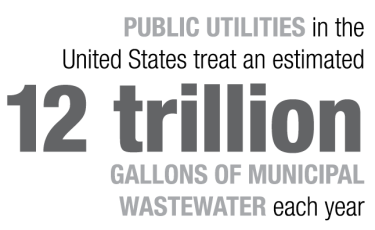CU-Boulder engineers aim to turn America’s dirty water into cleaner air, energy for industry
 Cleaning up municipal and industrial wastewater can be dirty business, but Zhiyong (Jason) Ren and his colleagues have developed the ultimate presto chango: an innovative treatment method that mitigates carbon dioxide (CO2) emissions and creates renewable energy in the process.
Cleaning up municipal and industrial wastewater can be dirty business, but Zhiyong (Jason) Ren and his colleagues have developed the ultimate presto chango: an innovative treatment method that mitigates carbon dioxide (CO2) emissions and creates renewable energy in the process.
The new method, known as Microbial Electrolytic Carbon Capture (MECC), purifies wastewater in an environmentally friendly fashion by creating an electrochemical reaction that absorbs more CO2 than it releases. The process also yields excess hydrogen gas, which can be stored and harnessed as energy in a fuel cell.
“This energy-positive, carbon-negative method could potentially contain huge benefits for a number of emission-heavy industries,” says Ren, an associate professor of civil, environmental and architectural engineering and the recipient of the 2015 CU-Boulder New Inventor of the Year Award.
Wastewater treatment typically produces CO2 emissions in two ways: the fossil fuels burned to power the machinery, and the decomposition of organic material within the wastewater itself. Plus, wastewater treatment technologies typically consume enormous amounts of energy.
Existing carbon-capture technologies are energy-intensive and often entail costly transportation and storage procedures. The MECC method, however, uses the natural conductivity of saline wastewater to facilitate an electrochemical reaction designed to absorb CO2 from both the water and the air.
The process then transforms that CO2 into stable mineral carbonates and bicarbonates that can be used as raw materials by the construction industry, used as a chemical buffer in the wastewater treatment cycle itself or used to counter acidity downstream from the process such as in the ocean.
“The results should be viewed as a proof-of-concept with promising implications for a wide range of industries,” says Ren.
It’s been a busy year for Ren and his colleagues. Earlier in 2015, they developed a microbe-powered battery that can remove both salts and organic contaminants from wastewater while producing and harnessing additional energy.
That technology, called microbial capacitive desalination, resembles a battery in its basic form, says Casey Forrestal, a postdoctoral researcher in Ren’s lab. “Instead of the traditional battery, which uses chemicals to generate the electrical current, we use microbes to generate an electrical current that can then be used for desalination.”
Not only does the system allow this salt to be removed from the wastewater, but it also creates additional energy that could be used on-site to run equipment, for example.
If scaled, this method could be a game changer for oil and gas operations, where the saltiness of the water and the organic contaminants it contains traditionally make treatment difficult and expensive. Ren’s findings offer the possibility that wastewater could be treated effectively on-site without the risks or costs typically associated with disposal.
“Right now, oil and gas companies have to spend energy to treat the wastewater,” Ren says. “We are able to treat it without energy consumption. Rather, we extract energy out of it.”
The next step? Taking this promising technology out of the lab and into the field. That work has already begun, thanks to grants from the National Science Foundation. Ren and Forrestal have also co-founded a startup called BioElectric Inc. to commercialize their treatment methods.
Once scaled up, this two-in-one wastewater solution could prove to be the ultimate win-win for the environment and industry in Colorado and beyond.


